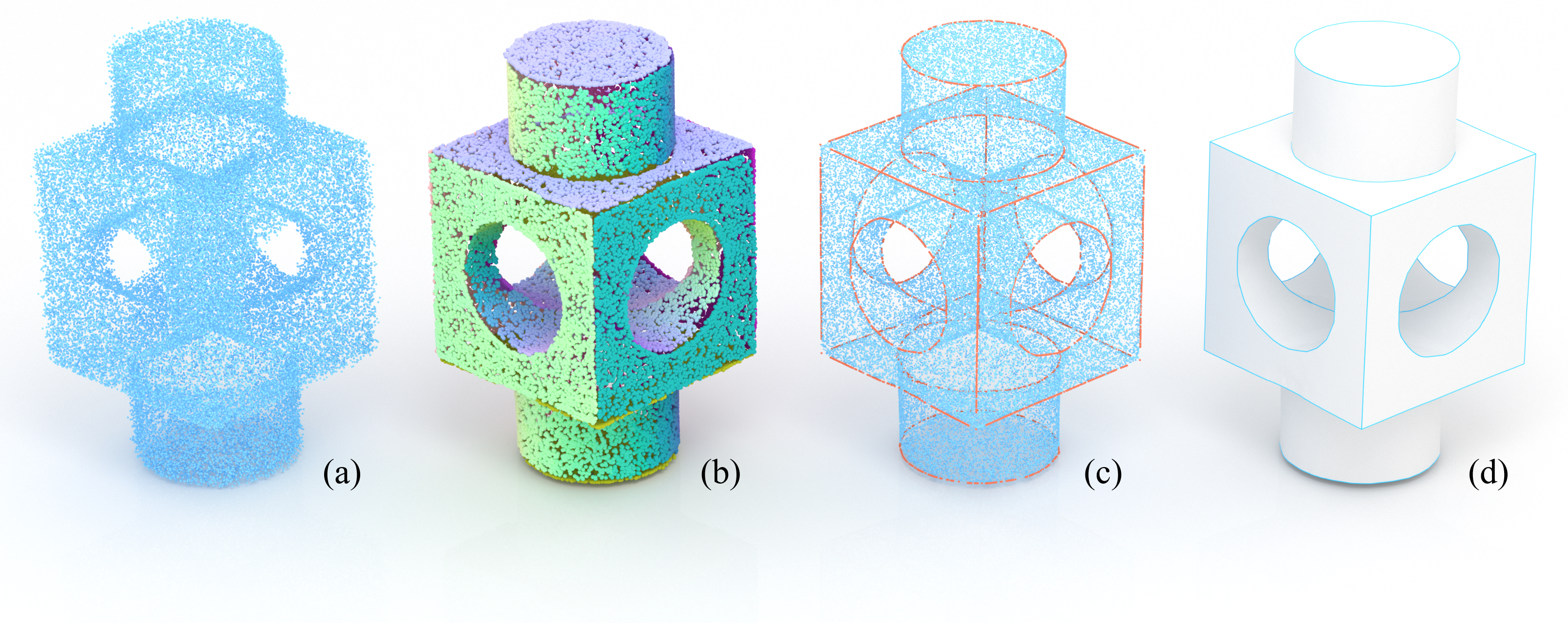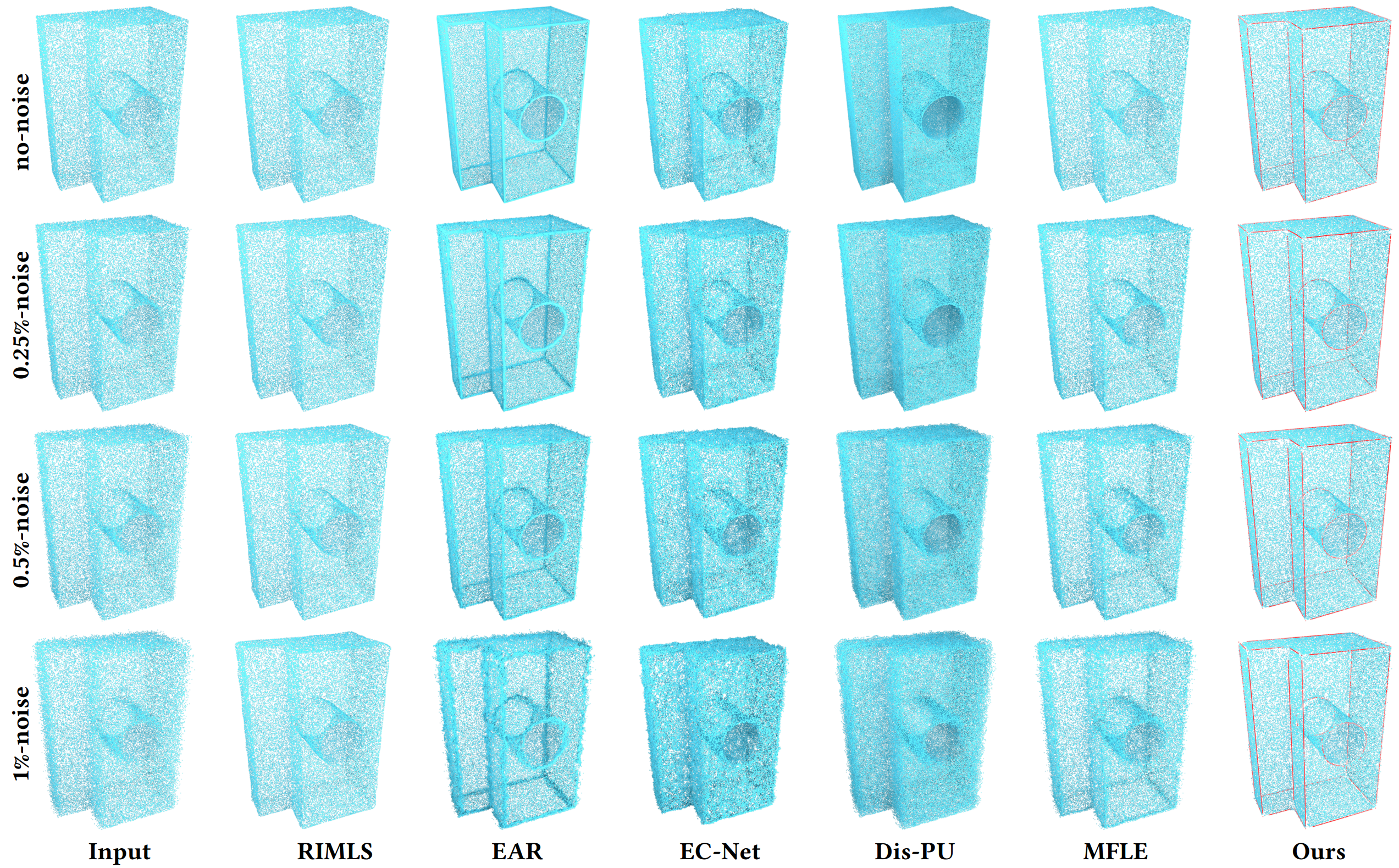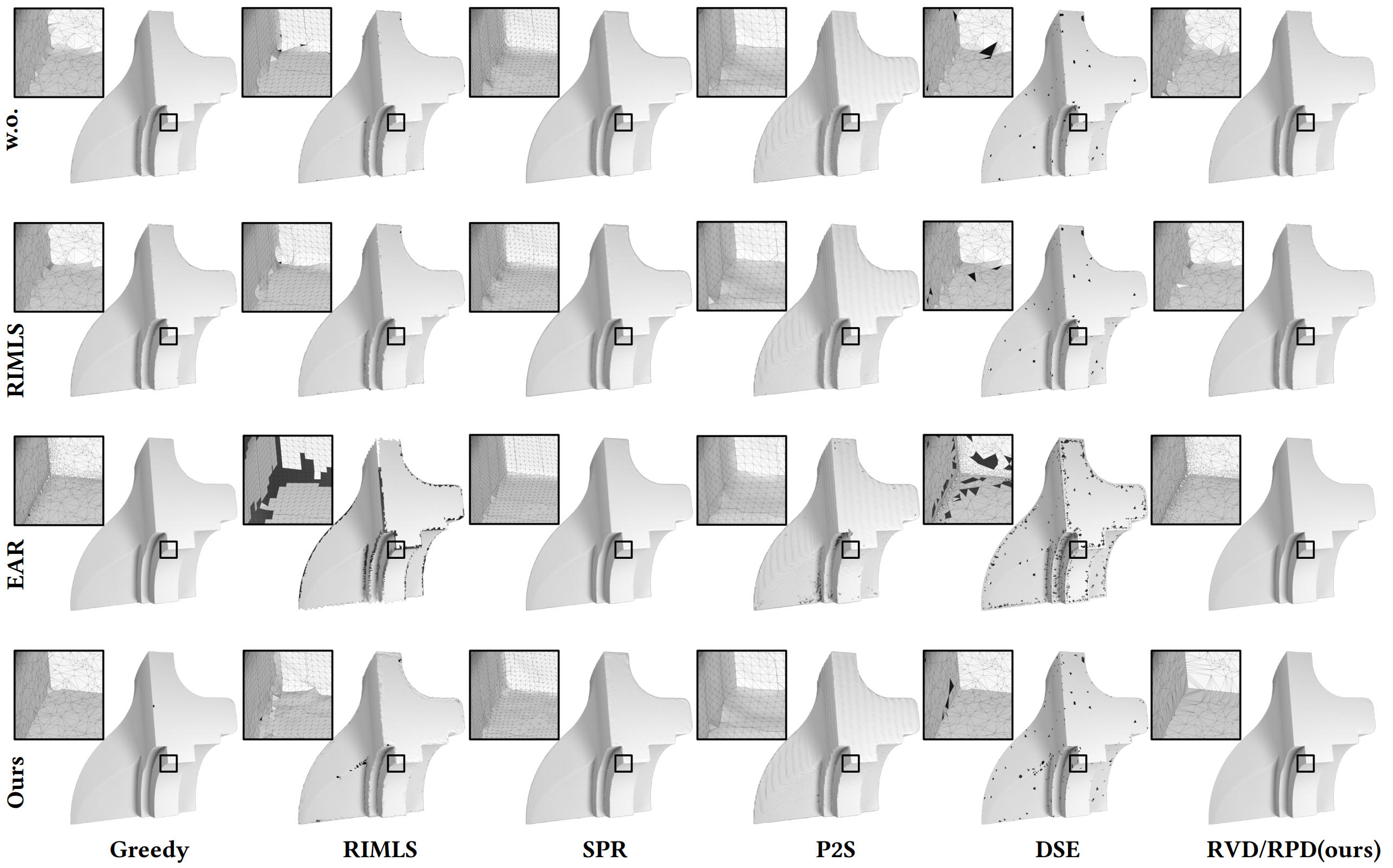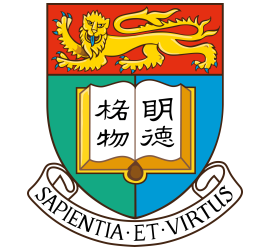RFEPS: Reconstructing Feature-line Equipped Polygonal Surface
ACM Transactions on Graphics.
Abstract

Feature lines are important geometric cues in characterizing the structure of a CAD model. Despite great progress in both explicit reconstruction and implicit reconstruction, it remains a challenging task to reconstruct a polygonal surface equipped with feature lines, especially when the input point cloud is noisy and lacks faithful normal vectors. In this paper, we develop a multistage algorithm, named RFEPS, to address this challenge. The key steps include (1) denoising the point cloud based on the assumption of local planarity, (2) identifying the feature-line zone by optimization of discrete optimal transport, (3) augmenting the point set so that sufficiently many additional points are generated on potential geometry edges, and (4) generating a polygonal surface that interpolates the augmented point set based on restricted power diagram. We demonstrate through extensive experiments that RFEPS, benefiting from the edge-point augmentation and the feature preserving explicit reconstruction, outperforms state of the art methods in terms of the reconstruction quality, especially in terms of the ability to reconstruct missing feature lines.">
Introduction

Pipeline of RFEPS. (a) Input point cloud. (b) Normal predict. (c) Point and normal refinement. (d) Feature Points. (e) RPD reconstruction.
In this paper, we introduce two separate techniques to deal with the above-mentioned difficulties. First, we observe that in the neighborhood of an edge point, the distribution of normal vectors can be represented as a combination of two independent subdistributions with equal measure, and each sub-distribution is as simple as a Dirac delta function. Based on this observation, we formulate the identification of the edge zone as a discrete optimal mass transport problem, which can help regularize point locations and normal vectors, and predict the edge points as well. Second, we suggest using the restricted power diagram (RPD) to build connections between points. Compared with the restricted Voronoi diagram (RVD), the RPD not only has the nice feature of the RVD, but also allows to set a larger weight for edge points, thus encouraging edge points to naturally form feature lines with a higher priority than other points.
Results

A gallery of reconstruction results by our RFEPS.
Consolidation Results

Test point cloud consolidation approaches by introducing different levels of noise. It can be seen that our method can not only effectively eliminate noise but also recover faithful feature lines.
Reconstruction Results

Comparison with state of the arts of surface reconstruction from different point cloud consolidation methods. The whole pipeline of RFEPS surpasses other methods in terms of reconstruction fidelity and manifoldness.
Noisy Reconstruction Results

Comparison with state of the arts on a noisy point cloud input. RFEPS surpasses other methods in both the accuracy and manifoldness of the reconstruction.
Check out our paper for more details.
Citation
@article{Rui2022RFEPS,
author = {Xu, Rui and Wang, Zixiong and Dou, Zhiyang and Zong, Chen and Xin, Shiqing and Jiang, Mingyan and Ju, Tao and Tu, Changhe},
title = {RFEPS: Reconstructing Feature-line Equipped Polygonal Surface},
journal = {ACM Transactions on Graphics (TOG)},
year = {2022},
publisher = {ACM},
doi = {10.1145/3550454.3555443},
booktitle = {ACM SIGGRAPH Asia 2022 Papers},
numpages = {15},
series = {SIGGRAPH Asia '22}
}Page last updated





